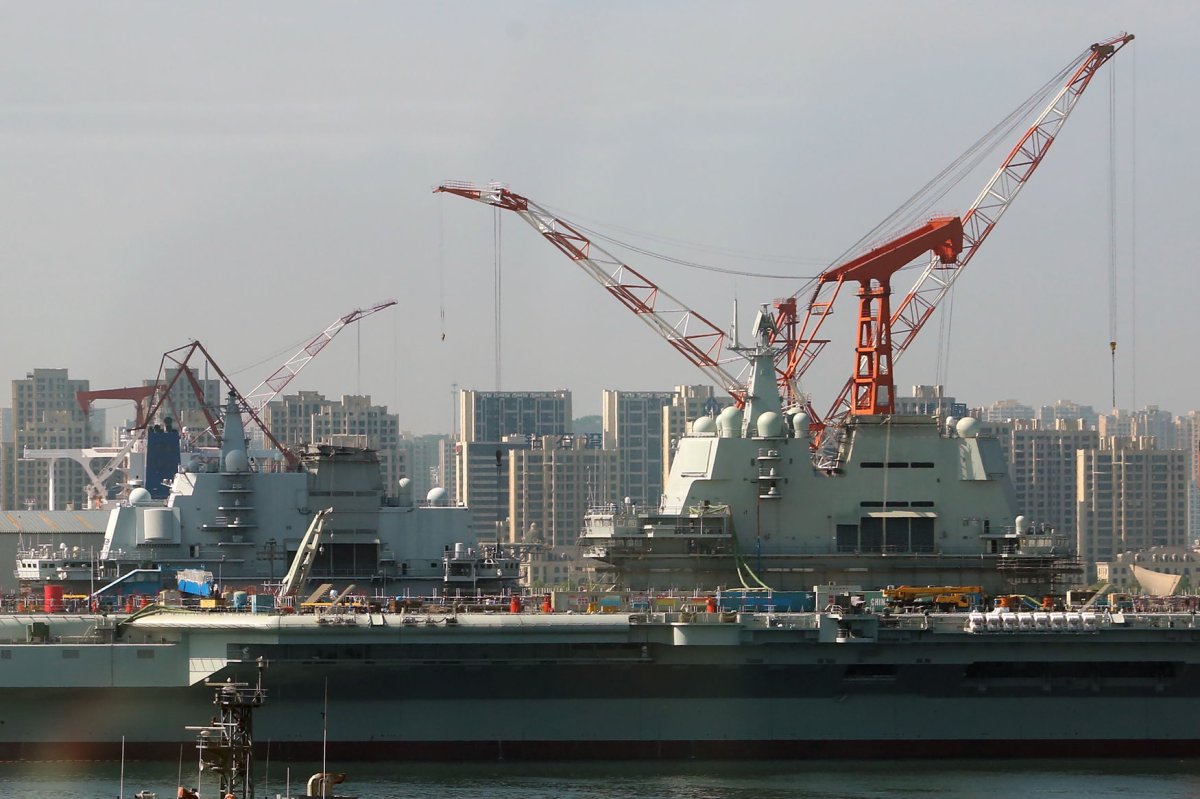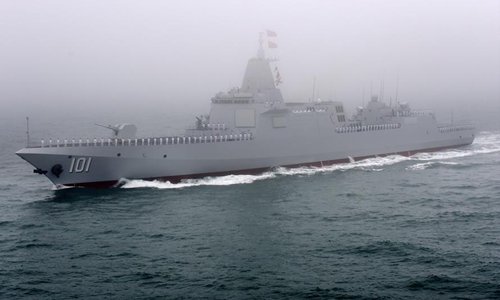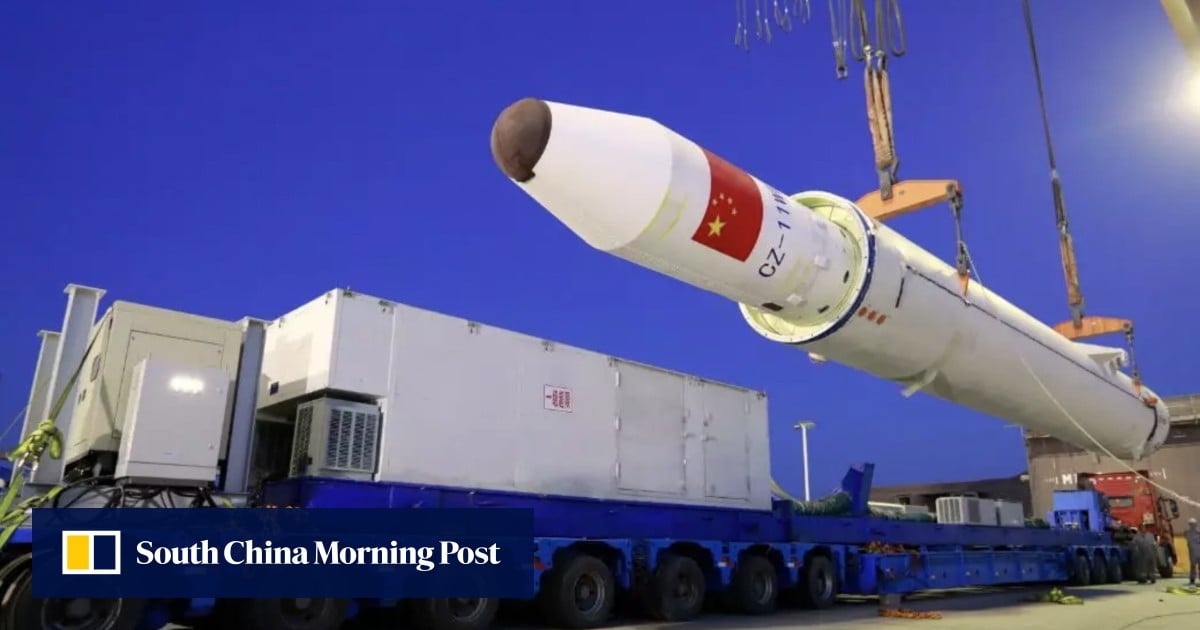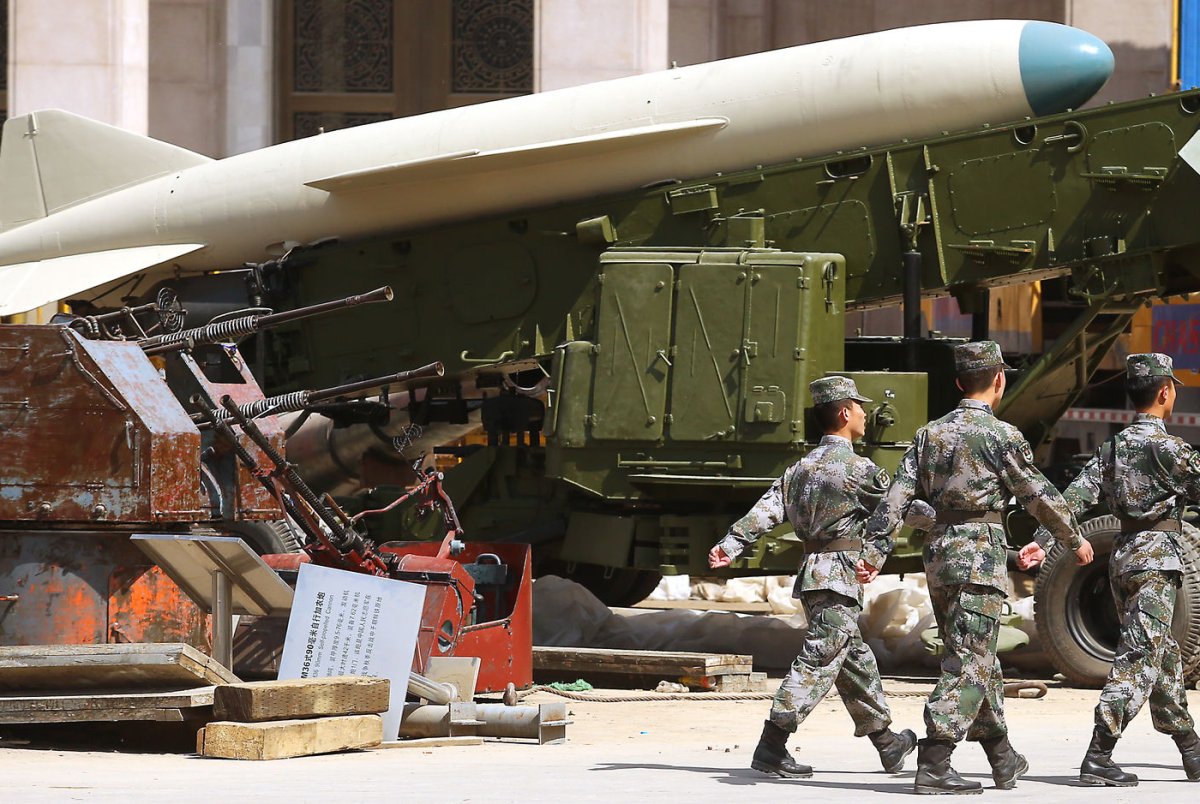Images show construction on China’s third – and largest – aircraft carrier
by Reuters -
7th May 2019
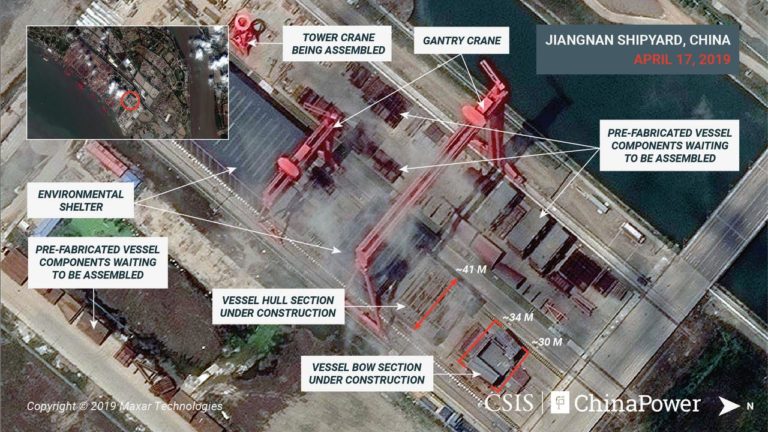
Construction of China's third aircraft carrier.
Construction of China’s first full-sized aircraft carrier is well under way, according to satellite images obtained and analysed by a U.S. think tank.
The images from April, provided to Reuters by the Center for Strategic and International Studies (CSIS) in Washington, reveal considerable recent activity during the last six months on a large vessel at the Jiangnan shipyard outside Shanghai.
China has not formally confirmed it is building a third carrier, despite recent hints in state media, and the timing and extent of its carrier programme remain state secrets.
The Pentagon said last week that work had begun, but no images have emerged until now.
Both Asian and Western militaries, and regional security analysts, are seeking information on the carrier, which is expected to be China’s first large, modern platform capable of leading a full range of strike group operations.
The effort to build a large, locally designed carrier is seen as a core part of China’s extensive military modernisation drive. A series of recent Reuters Special Reports showed how that effort is challenging decades of U.S. strategic superiority in East Asia.
The CSIS images show a bow section that appears to end with a flat 30-metre (98-foot) front and a separate hull section 41 metres wide, with gantry cranes looming overhead.
That suggests a vessel, which China has dubbed Type 002, somewhat smaller than 100,000-tonne U.S. carriers but larger than France’s 42,500-tonne Charles de Gaulle, analysts say.
Fabrication halls the size of several soccer pitches have been built nearby, and work appears to be continuing on a floodable basin, possibly to float the finished hull into the nearby Yangtze River estuary.
“While details regarding the Type 002 are limited, what is observable at Jiangnan is consistent with what is expected for the People’s Liberation Army Navy’s third aircraft carrier,” said the CSIS’ ChinaPower analysis, due to be published on its website later Tuesday.
CSIS analyst Matthew Funaiole told Reuters that images taken late last year were inconclusive, but that now the work under way is clear.
“From what we can see there has been a lot of activity in the last six months or so,” he said. “It would appear that it is the third carrier, and if it is not, it’s hard to envisage what other large vessel it would be.”
The Pentagon’s annual report on China’s military modernisation, issued last Friday, noted that the third carrier would probably be larger than the first two and fitted with a catapult launch system to accelerate aircraft during takeoff.
“This design will enable it to support additional fighter aircraft, fixed-wing early-warning aircraft, and more rapid flight operations,” the report said.
Funaiole and other analysts said it was unclear what kind of catapult – traditional steam-powered or a more cutting-edge electromagnetic system – would be used.
It also remains unclear whether the Type 002 would be nuclear-powered. China has 10 nuclear-powered submarines, but so far no surface ships with nuclear propulsion; some analysts think China is not ready to make that step.
Singapore-based regional security analyst Ian Storey said a full-sized carrier would make some of China’s neighbours nervous and highlight the importance of their strategic relationship with the United States.
“Once completed, it will outclass any warship from any Asian country, including India and Japan,” said Storey, of the ISEAS Yusof Ishak Institute. “It is yet another indication that China has emerged as Asia’s paramount naval power.”
China’s first two carriers are relatively small, with only up to 25 aircraft, less than half the number aboard U.S. carriers, and have jump ramps built into their bows. That configuration limits not just the types of aircraft that can fly off them, but how much weaponry and fuel they can carry.
Its first carrier, the Liaoning, was a Soviet-era Ukrainian ship bought secondhand in 1998 and re-fitted in China. A still-unnamed second carrier based on that design, launched in 2017, was built locally.
The Liaoning had been seen as more of a training platform for teaching personnel the tricky art of carrier operations. But last month, Chinese state media said the ship “is starting to play a combat role following recent modifications and intensive training exercises.”
The second carrier has been undergoing sea trials from its base in northern Dalian and is not expected to enter service until 2020.
China’s state media have quoted experts as saying China needs at least six carriers. The United States operates 11 carriers.
China’s Ministry of Defence did not respond to a request for comment.
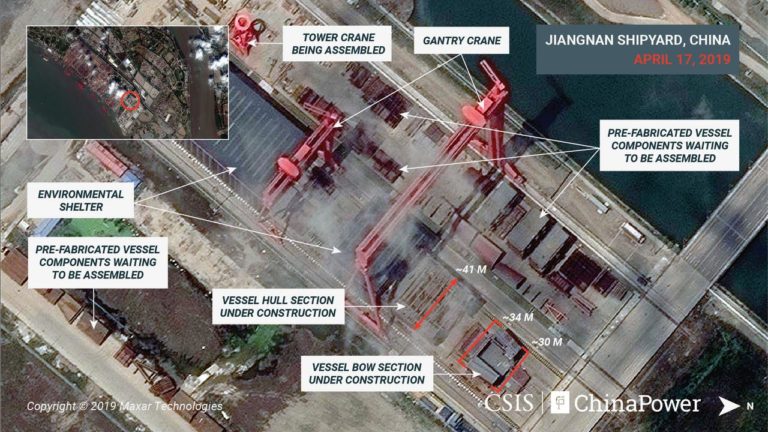
 www.defenceweb.co.za
www.defenceweb.co.za
by Reuters -
7th May 2019

Construction of China's third aircraft carrier.
Construction of China’s first full-sized aircraft carrier is well under way, according to satellite images obtained and analysed by a U.S. think tank.
The images from April, provided to Reuters by the Center for Strategic and International Studies (CSIS) in Washington, reveal considerable recent activity during the last six months on a large vessel at the Jiangnan shipyard outside Shanghai.
China has not formally confirmed it is building a third carrier, despite recent hints in state media, and the timing and extent of its carrier programme remain state secrets.
The Pentagon said last week that work had begun, but no images have emerged until now.
Both Asian and Western militaries, and regional security analysts, are seeking information on the carrier, which is expected to be China’s first large, modern platform capable of leading a full range of strike group operations.
The effort to build a large, locally designed carrier is seen as a core part of China’s extensive military modernisation drive. A series of recent Reuters Special Reports showed how that effort is challenging decades of U.S. strategic superiority in East Asia.
The CSIS images show a bow section that appears to end with a flat 30-metre (98-foot) front and a separate hull section 41 metres wide, with gantry cranes looming overhead.
That suggests a vessel, which China has dubbed Type 002, somewhat smaller than 100,000-tonne U.S. carriers but larger than France’s 42,500-tonne Charles de Gaulle, analysts say.
Fabrication halls the size of several soccer pitches have been built nearby, and work appears to be continuing on a floodable basin, possibly to float the finished hull into the nearby Yangtze River estuary.
“While details regarding the Type 002 are limited, what is observable at Jiangnan is consistent with what is expected for the People’s Liberation Army Navy’s third aircraft carrier,” said the CSIS’ ChinaPower analysis, due to be published on its website later Tuesday.
CSIS analyst Matthew Funaiole told Reuters that images taken late last year were inconclusive, but that now the work under way is clear.
“From what we can see there has been a lot of activity in the last six months or so,” he said. “It would appear that it is the third carrier, and if it is not, it’s hard to envisage what other large vessel it would be.”
The Pentagon’s annual report on China’s military modernisation, issued last Friday, noted that the third carrier would probably be larger than the first two and fitted with a catapult launch system to accelerate aircraft during takeoff.
“This design will enable it to support additional fighter aircraft, fixed-wing early-warning aircraft, and more rapid flight operations,” the report said.
Funaiole and other analysts said it was unclear what kind of catapult – traditional steam-powered or a more cutting-edge electromagnetic system – would be used.
It also remains unclear whether the Type 002 would be nuclear-powered. China has 10 nuclear-powered submarines, but so far no surface ships with nuclear propulsion; some analysts think China is not ready to make that step.
Singapore-based regional security analyst Ian Storey said a full-sized carrier would make some of China’s neighbours nervous and highlight the importance of their strategic relationship with the United States.
“Once completed, it will outclass any warship from any Asian country, including India and Japan,” said Storey, of the ISEAS Yusof Ishak Institute. “It is yet another indication that China has emerged as Asia’s paramount naval power.”
China’s first two carriers are relatively small, with only up to 25 aircraft, less than half the number aboard U.S. carriers, and have jump ramps built into their bows. That configuration limits not just the types of aircraft that can fly off them, but how much weaponry and fuel they can carry.
Its first carrier, the Liaoning, was a Soviet-era Ukrainian ship bought secondhand in 1998 and re-fitted in China. A still-unnamed second carrier based on that design, launched in 2017, was built locally.
The Liaoning had been seen as more of a training platform for teaching personnel the tricky art of carrier operations. But last month, Chinese state media said the ship “is starting to play a combat role following recent modifications and intensive training exercises.”
The second carrier has been undergoing sea trials from its base in northern Dalian and is not expected to enter service until 2020.
China’s state media have quoted experts as saying China needs at least six carriers. The United States operates 11 carriers.
China’s Ministry of Defence did not respond to a request for comment.

Images show construction on China's third - and largest - aircraft carrier - defenceWeb
Construction of China’s first full-sized aircraft carrier is well under way, according to satellite images obtained and analysed by a U.S. think tank. The images from April, provided to Reuters by the Center for Strategic and International Studies (CSIS) in Washington, reveal considerable recent...

